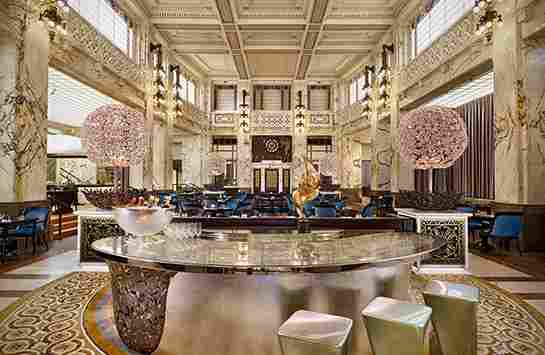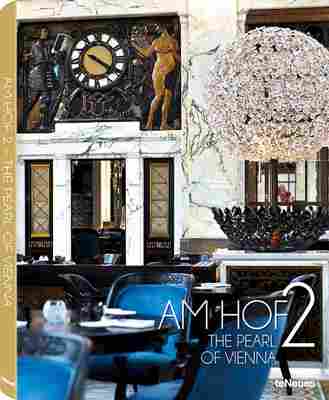A new book, Am Hof 2: The Pearl of Vienna ($65, teNeues), traces the history of a notable address in the heart of Vienna. Once home to a Roman military camp and later the site of Babenberg Castle, Am Hof 2 was turned into a bank headquarters in the early 20th century. Today, it stands as a seven-story hotel, blending historical architecture and design with modern luxuries. The book chronicles the building’s past through striking photography and rich detail, telling a story with a nod to history as much as to architecture.
The square where Am Hof 2 stands is one of the oldest parts of the city, where Roman troops established their Vindobona military camp in 98 AD. Centuries later, the Duke of Austria built the Babenberg Castle there, repurposing the remaining walls of the Roman fort into a palace. During the Reformation, it was transformed into a church and monastery building, with stone pillars and an ornate façade.

The modern building at Am Hof 2, originally the headquarters for Austrian Länderbank, was constructed between 1913 and 1915 by Ernst von Gotthilf and Alexander Neumann. The pair were Austria’s star architects at the time, and had previously designed structures such as the main building of the Vienna Bank Corporation, as well as private residences including the colossal Palais Fanto. Austrian Länderbank was among the first buildings in Vienna built in a neoclassical style, and it included many opulent features, for example, a wood-paneled elevator inlaid with mother-of-pearl, which was used to cart bank directors to their offices on the second floor.

Today, while many features have been modernized, the hotel pays homage to the building’s past: The historic elevator remains; some of the original structure’s marble floors and wood-paneled walls have been preserved; and other details, for instance, the gable-crowned avant-corps and sand-lime brick façade, have been renovated to maintain the site’s historical grandeur.
The book begins with photographs of the building in its modern iteration and peels the layers back, giving way to a history of both architecture and culture in one of Vienna’s finest landmarks.
